Another electric vehicle debuting at the 2010 Los Angeles Auto Show, and this time we’re talking about the Honda Fit EV Concept.
The Honda Fit EV Concept is based on the current generation Fit, known as Jazz on the European market, and the car hints (in terms of design and technology) at the production version Fit EV which is expected to enter the Japanese and American market in 2012.
The Honda Fit EV Concept uses a lithium-ion battery and a coaxial electric motor for propulsion, and according to Honda, the car can cover 100 miles on a single charge and can reach speeds of up to 90 mph.
Recharging the Honda Fit EV Concept takes around 12 hours when using a 120V outlet, or 6 hours when using a 240V outlet, and the car features a 3-mode electric drive system, adapted from the 2011 Honda CR-Z sport hybrid.
The three driving models are Econ, Normal, and Sport. hen driven in Econ mode the Honda Fit EV Concept can extend its range bu up to 17 percent compared to Normal mode, while the Sport mode generates the same level of performance as a vehicle equipped with a 2.0-litre gasoline engine.
Honda press release :
World Debut of Honda Fit EV Concept Electric Vehicle and Plug-in Hybrid Platform at Los Angeles Auto Show
Advanced environmental vehicles key to Honda Electric Mobility Network
LOS ANGELES – Nov. 17, 2010 – Honda today unveiled the all-new Fit EV Concept electric vehicle and the platform for a midsize plug-in hybrid vehicle. Both vehicles are integral to the Honda Electric Mobility Network, the company’s comprehensive approach to reducing CO2 emissions through innovative products, energy-management and energy-production technologies.
The Fit EV Concept hints strongly at the direction and styling for Honda’s upcoming production Fit EV all-electric vehicle, which will be introduced to the U.S. and Japan in 2012. The all-new plug-in hybrid platform showcases Honda’s next-generation, two-motor hybrid technology set to debut in 2012.
“Honda’s long history with electromotive technologies has enabled us to understand customer requirements,” said Takanobu Ito, Honda Motor Co., Ltd. President and CEO. “In Honda’s view, an electric vehicle must offer great utility and be fun to drive. Fit EV’s urban commuting capability will be a perfect addition to the full-function mobility of the plug-in hybrid and FCX Clarity fuel cell electric vehicle.”
Honda Fit EV
The Fit EV is designed to meet the daily driving needs of the average metropolitan commuter and utilizes the same 5-passenger layout found in the popular Fit hatchback. When the Fit EV production model is introduced, it will be powered by a lithium-ion battery and coaxial electric motor.
The high-density motor, derived from the FCX Clarity fuel cell electric vehicle, delivers excellent efficiency and power while remaining quiet at high speeds. The Fit EV will have a top speed of 90 mph.
The Fit EV will achieve an estimated 100-mile driving range per charge using the US EPA LA41 city cycle (70 miles when applying EPA’s adjustment factor). Driving range can be maximized by use of an innovative The system allows the driver to select between Econ, Normal, and Sport to instantly and seamlessly change the driving experience to maximize efficiency or improve acceleration. While in Econ mode, practical driving range can increase by as much as 17 percent, compared to driving in Normal mode, and up to 25 percent compared to driving in Sport mode. Acceleration improves significantly when in Sport mode, generating performance similar to a vehicle equipped with a 2.0-liter gasoline engine.
In addition to the 3-mode E-Drive system, the Fit EV will include several interactive coaching systems to assist the driver in maximizing battery range.
A special meter display advises the driver when to shut off air conditioning and other accessories to conserve battery power.
To help the driver manage the electric vehicle ownership experience, the Fit EV will have a standard connectivity system that allows the driver to stay connected through a smartphone and personal computer, or the Honda-exclusive interactive remote, while away from the vehicle. The pocket-friendly, interactive remote provides connectivity to the vehicle without the need for an internet connection or mobile phone signal. Through the connectivity system, drivers will be able to remotely view the vehicle’s state of charge, initiate charging and activate the air conditioning, even while connected to the grid, to reduce the drain on the battery at start-up. The mobile application and website also offers the ability to set charging notifications and alerts to optimize utility rates, and provides 24-hour roadside assistance, along with a public charging station locator. The Fit EV will come equipped with a standard Honda Satellite Linked Navigation System™ that includes a public charging-station locator capability.
The Fit EV is designed to be easy and convenient to charge. Battery recharging can be accomplished in less than 12 hours when using a conventional 120-volt outlet, and less than six hours when using a 240-volt outlet.
The Fit EV Concept displayed at the Los Angeles Auto Show features an exclusive Deep Clear Blue Pearl exterior color and distinctive five-spoke aluminum-alloy wheels with blue inserts. The Concept has unique LED headlights, a chrome front fascia, aerodynamic bumper, clear LED taillights and EV decals. Inside, the Fit EV Concept is outfitted in an eco-friendly gray bio-fabric on the seating surfaces.
Displayed alongside the Fit EV Concept at the show is a prototype Honda charging stand. To begin charging, the driver swipes a card in front of the screen and then connects the charger to the vehicle. The Honda charging stand provides a glimpse at the future of an electric-charging infrastructure that is easy to use and intuitive for consumers.
Honda Plug-in Hybrid
Honda also unveiled a plug-in hybrid platform, which showcases Honda’s next-generation two-motor hybrid system. Integrated into a mid-size sedan platform, the plug-in hybrid is designed to be compatible with daily driving habits, allowing for short, frequent trips in all-electric mode, while providing long-distance driving capability when needed. The Honda two-motor system continuously moves through three different modes to maximize driving efficiency: all-electric, gasoline-electric and a unique, engine direct-drive mode. The plug-in hybrid also uses regenerative braking to charge the battery.
In all-electric mode, the vehicle uses a 6kWh lithium-ion battery and a powerful 120 kW electric motor. The all-electric mode achieves a range of approximately 10-15 miles in city driving and a top speed of 62 mph. Fully recharging the battery will take 2 to 2.5 hours using a 120-volt outlet and 1 to 1.5 hours using a 240-volt outlet.
The vehicle can also run in a gasoline-electric hybrid mode, the platform features a fuel-efficient 2.0-liter, i-VTEC® inline 4-cylinder, Atkinson cycle engine, paired with an electric Continuously Variable Transmission (E-CVT). An onboard generator adds to the battery powering the electric motor.
For more efficient high-speed cruising, the vehicle can engage in a direct-drive mode, in which only the engine drives the front wheels.
Advanced Technology Demonstration Program
Honda will launch an Advanced Technology Demonstration Program this year to provide real-world testing of its new vehicles, as well as research into customer behavior and usability, public charging infrastructure planning and sustainability initiatives. Partners in the program will include Stanford University, City of Torrance, Calif. and Google, Inc.
Honda Electric Mobility Network and Energy Management
Together with the Honda FCX Clarity fuel cell electric vehicle, the Fit EV and the future plug-in hybrid vehicle are a part of the company’s comprehensive approach to reducing CO2 emissions. Honda is unique in its efforts to create both environmentally-responsible products and the renewable energy solutions to power them. Honda is currently producing and marketing thin-film solar panels in Japan, and an installation is planned at Honda Performance Development in Southern California in early 2011.
Honda is also using innovative ways to produce and distribute energy through sustainable methods, such as using solar power to produce hydrogen fuel from water. Additionally, Honda is developing home energy-management systems that utilize micro-cogeneration technology and solar cell modules to power and heat homes as well as charge electric vehicles. The Honda Electric Mobility Network joins clean vehicle technology, renewable energy production and energy management solutions for the benefit of customers and society.
Honda Environmental Leadership
The Fit EV and a plug-in hybrid sedan will be introduced to the U.S. and Japan in 2012, joining Honda’s diverse lineup of environmentally-responsible vehicles, which include the FCX Clarity fuel cell electric vehicle, the Civic GX compressed natural gas-powered sedan (U.S. only) and four distinct gasoline-electric hybrid models: Civic Hybrid; CR-Z sport hybrid; Insight hybrid and Fit Hybrid (Japan and Europe only).
Honda was recently named America’s “Greenest Automaker” for the fifth consecutive time by the Union of Concerned Scientists (UCS). The award is earned by the company with the lowest combined smog-forming and greenhouse-gas emissions (primarily CO2) in its U.S. automobile fleet.
Honda has led the UCS rankings of overall vehicle environmental performance since the first UCS study in 2000, marking a decade of Honda leadership in reduced vehicle emissions. Honda earned the recognition this year with an industry-best score based on model year 2008 data, the latest available for analysis.
American Honda Motor Co., Inc.
Honda began operations in the U.S. in 1959 with the establishment of American Honda Motor Co., Inc., Honda’s first overseas subsidiary. Honda began U.S. production of motorcycles in 1979 and automobiles in 1982. With nine U.S. plants, Honda has invested more than $12.7 billion in its U.S. operations. The company employs nearly 25,000 associates and annually purchases $12 billion in parts and materials from more than 530 U.S. suppliers. Honda vehicles are manufactured using domestic and globally sourced parts.

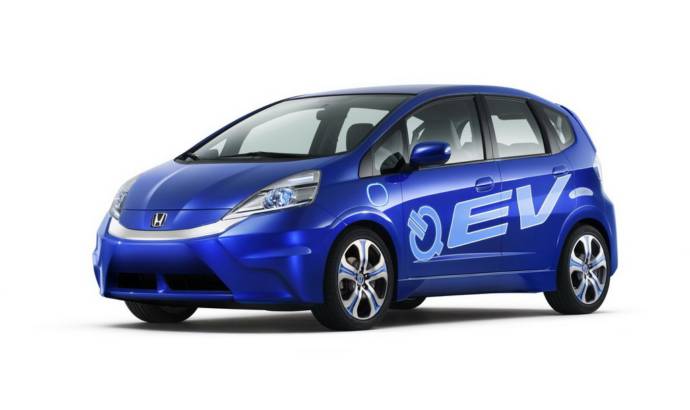
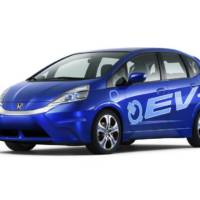
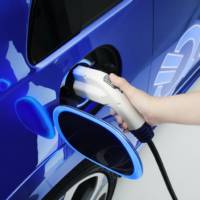
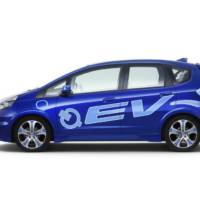
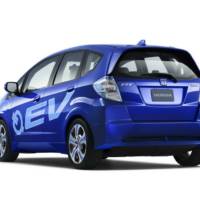
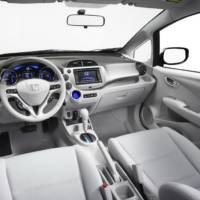
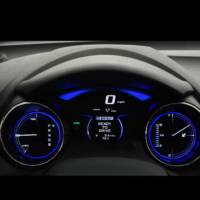
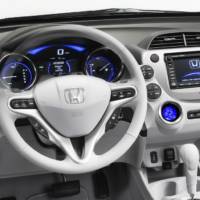
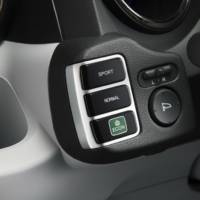


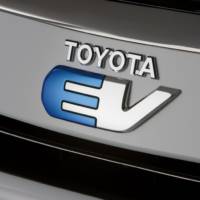
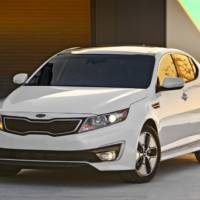
HERE WE GO AGAIN!!!!!!!!!!!!
USELESS SPENDING!!!!!!!!!!!!